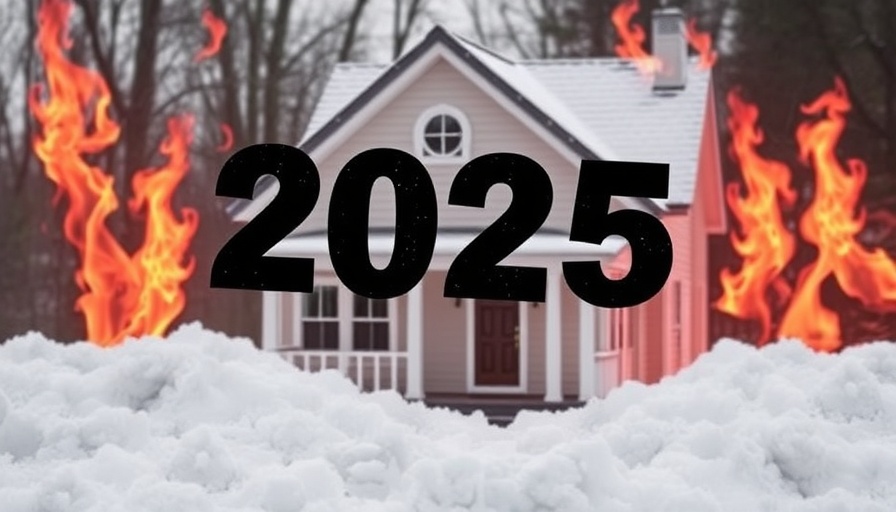
Is the 2025 Housing Market Headed for Trouble?
The 2025 U.S. housing market is sounding alarm bells reminiscent of the tumultuous years leading up to the 2008 crash. Debt-to-income (DTI) ratios are climbing, household debt burdens are rising, and home prices are continuing to soar amid persistent inflation. However, unlike the bubble leading up to 2008, the financial landscape features stricter lending standards and more robust regulations that have kept mortgage delinquency rates in check. This begs the question: could today's financial indicators signal a significant downturn similar to 2008?
Understanding the Echoes of 2008
In 2008, borrowers faced average DTI ratios of about 43%, which left many vulnerable to financial shocks when home values declined. Following the 2008 crisis, reforms reduced the average DTI ratio to approximately 35.5% in 2015, but recent statistics reveal a rise to 40.5% in 2025. Unfortunately, this means that over half of a household’s disposable income is earmarked for servicing debts, leaving little room to adapt to rising costs.
The Impact of Rising Insurance Costs
One critical factor contributing to homeowner stress is the escalating cost of insurance due to increased climate-related incidents—wildfires, hurricanes, and hailstorms are becoming more common. Between 2020 and 2023, average home insurance costs surged by 33%, far exceeding wage growth. Regions like Louisiana and California have been particularly hard-hit, seeing insurance increases of 27% and 21%, respectively. This trend exacerbates the financial pressure on homeowners already grappling with higher bills.
Consumer Debt Stress: A Rising Concern
The Federal Reserve Bank of New York highlights that consumer debt stress is at a concerning zenith. In 2024, for instance, credit card delinquency rates rose to 3.5%, up from 2.8% in 2022. Auto loan delinquencies also jumped to 2%, and student loan delinquencies are alarming at 20%, a level not seen since 2012. Overall household debt has now hit a staggering $18.04 trillion, presenting a potential domino effect on mortgage payments, especially for households with elevated DTIs.
High Debt and Low Equity: The Perfect Storm?
Several factors suggest potential catalysts for a housing market correction in 2025. Many analysts highlight that if debt levels remain high and household equity is low, the market could face substantial risks. As borrowing costs rise and disposable income shrinks, homeowners may find themselves unable to meet mortgage obligations, increasing the likelihood of defaults, which could ripple across the market.
What Real Estate Agents Should Watch For
Real estate agents should remain vigilant in monitoring these key indicators. Increased consumer debt and low equity levels among homeowners can serve as significant warning signs. Understanding the nuances of the current market conditions will empower agents to guide their clients better and navigate potential fallout from a changing economic landscape. Enhancing knowledge about these trends is essential for informed decision-making in real estate.
As we observe the shifting housing market in 2025, it’s crucial for real estate agents to stay informed about evolving economic conditions. By understanding the interplay of debt, income, and insurance costs, agents can provide valuable insights to their clients while positioning themselves to adapt to potential market shifts.
Equip yourself with the right information about the housing market. Focus not only on sales but also on supporting clients through this evolving landscape. By being proactive, agents can not only safeguard their businesses but also empower their clientele in these uncertain times.
 Add Row
Add Row  Add
Add 




 Add Row
Add Row  Add
Add 

Write A Comment